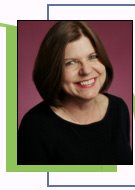
 Diane Perkins (Warner), the newest member of the Riskies, leads a double life as Diane Gaston (Harlequin Historical/Harlequin Mills & Boon). She’s gained a loyal following as a writer who tackles the gritty underside of the Regency era with passion, style, and compassion. Her May 2006 Harlequin Historical release, A Reputable Rake, is an RWA Rita finalist, and The Mysterious Miss M was voted 2005 Favorite First Book on eHarlequin and tied for Best Historical Series on AllAboutRomance.com.
Diane Perkins (Warner), the newest member of the Riskies, leads a double life as Diane Gaston (Harlequin Historical/Harlequin Mills & Boon). She’s gained a loyal following as a writer who tackles the gritty underside of the Regency era with passion, style, and compassion. Her May 2006 Harlequin Historical release, A Reputable Rake, is an RWA Rita finalist, and The Mysterious Miss M was voted 2005 Favorite First Book on eHarlequin and tied for Best Historical Series on AllAboutRomance.com.
Brilliant writing, a classic reformed rake plot, and vivid depictions of the Regency period make this a compelling read for fans of this era. Romantic Times BOOKclub
This latest, after such stellar releases as The Mysterious Miss M, and The Wagering Widow clearly show this author has what it takes…. Historical Romance Writers
Diane, congratulations on your Rita-nominated book, A Reputable Rake. Tell us a bit about this book–how did you come to write it, and what gave you the original idea?
The “Rake” of A Reputable Rake (Gaston), started out life as the villain, Cyprian Sloane, in my second Mills & Boon, The Wagering Widow. He tried to take over the book, so to appease him, I promised him a book of his own. Sloane was one of those “bad boys” who really is honorable inside. He decides to become respectable, but the alluring woman next door threatens that goal.
Did you come across any interesting research snippets while you were writing this book?
I read Courtesans by Katie Hickman (Harper Collins, 2003), which told the real life stories of five courtesans from the 18th and 19th centuries. It seemed to me that courtesans had more freedom and led more interesting lives than Regency housewives and I wanted to write about them. So I decided to have the heroine run a courtesan school right next door to Sloane, and he keeps getting embroiled in her scheme, to the risk of his attempt to become reputable.
Which is your favorite book, and why?
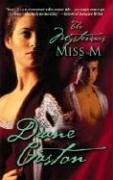 Well, The Mysterious Miss M (Gaston) has a special place in my heart, as does my first Diane Perkins book, The Improper Wife. Both were born of the same idea–a dramatic, emotionally bonding first meeting between the hero and heroine. The Mysterious Miss M is extra special to me, because it was my first published book and the book that almost never was. But I really have a special fondness for A Reputable Rake, another Gaston book. Cyprian Sloane captured my heart immediately, and his heroine, Morgana Hart, was such a strong, resourceful woman. I loved them both, and I loved the cast of characters that joined them in the story.
Well, The Mysterious Miss M (Gaston) has a special place in my heart, as does my first Diane Perkins book, The Improper Wife. Both were born of the same idea–a dramatic, emotionally bonding first meeting between the hero and heroine. The Mysterious Miss M is extra special to me, because it was my first published book and the book that almost never was. But I really have a special fondness for A Reputable Rake, another Gaston book. Cyprian Sloane captured my heart immediately, and his heroine, Morgana Hart, was such a strong, resourceful woman. I loved them both, and I loved the cast of characters that joined them in the story.
This is a Regency with the gutsiness of a Dickens novel. It’s not always pretty, but it’s real and passionate. Gaston’s strong, memorable debut provides new insights into the era and characters that touch your heart and draw you emotionally into her powerful story. — Kathe Robin, Romantic Times BOOKclub.

The Marriage Bargain was a struggle for me to write but I am so proud of the result. It was a Romantic Times Top Pick and a Romantic Times Reviewers Choice nominee.
Perkins takes a standard marriage of convenience plot and brilliantly turns it into an emotionally intense, utterly captivating story that will thrill readers to their core.– Kathe Robin, RT BOOKclub
Your first book, The Mysterious Miss M, has a heroine who is a prostitute. Was this a difficult book to sell?
When the manuscript that became The Mysterious Miss M became a finalist in RWA’s 2001 Golden Heart contest, I marketed it to every agent and editor I could think of. It was rejected over and over, editors and agents saying that readers would never accept my “prostitute” heroine. By the time Miss M made the finals of the 2003 Golden Heart (giving me membership in the Wet Noodle Posse!), I knew of nowhere else to send it. I had just finished writing The Improper Wife and could only think to use my GH finalist status to try to sell that book. Then one day I had a phone call from Kate Paice, an editor at Mills & Boon who’d judged Miss M in the Golden Heart and wanted to buy it! I literally never considered sending the manuscript to Mills & Boon, so if it had not been for the Golden Heart contest, Miss M might never have seen print. And I would not have written The Wagering Widow or A Reputable Rake. I should add that Miss M won the 2003 Golden Heart for Best Long Historical manuscript, and a couple of months later, The Improper Wife sold to Warner Forever.

Her stories are witty and unforgettable, with characters that are laid bare in such a manner that readers are drawn into the story right from the opening chapters… Diane Gaston’s books are always page-turners; she involves her readers in the dramas of her characters with the knowledge of their motives and cheeky insights into their thoughts. Naomi, Fallen Angel Reviews
Do you feel that having a first book with such a controversial heroine made your readers expect something different and daring in consequent books?
I am not sure about readers, but I know that Mills & Boon expected something different and daring in my subsequent books! They really have encouraged me to explore the darker side of the Regency, which has been great fun. Warner has been more interested in the emotional character-driven stories set in the Regency, and that also has been a great pleasure, because I love to delve deep into my characters.
What do you consider particularly risky about your writing?
The easy answer would be my choice of subject matter for my books — prostitutes, gaming hells, courtesans — but I think what is really risky about my books is my take on the characters. I love to conjure up complex characters that have genuine flaws and darkness about them. And I don’t like to totally redeem them either. They are flawed people who grow because of love, but not everything turns out perfectly. Because of love, however, they are able to live with what is not perfect.
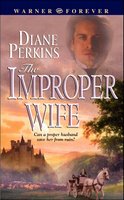
The Improper Wife is a grand historical romance written with deep emotion, authenticity, and originality. One for the keeper shelf.— Jane Bowers, Romance Reviews Today
Your books have beautifully done sex scenes. Do you find them difficult to write?
Thank you! I have the great good fortune to have Karen Anders, a Blaze author, as a critique partner, and, although my sex scenes are not nearly as erotic as hers, I have learned so much from her on what makes a great love scene. Something emotional has to happen and change for the characters in their sexual encounter, and you must try to bring in as many of the senses as possible. So I just try to emulate Karen when I write the scene.
What are your influences/what do you like to read?
My influences are first and foremost Mary Jo Putney and Mary Balogh. Books like theirs were what I aspired to write when I tried my hand at writing a Regency Historical Romance. I’ve also read a great deal of Georgette Heyer and all of Jane Austen. Before I started writing in the Regency, my very favorite genre to read was Traditional Regency, now sadly fading from the publishing landscape. I owe a deep debt of gratitude to all the authors who taught me to love this time period and to honor its history. Unfortunately, now that I’m writing in the time period, I have a great deal of difficulty reading it. I think I am afraid I will assimilate other author’s story ideas. Or maybe I’m afraid I’ll read something so wonderful, I’ll be scared to compete! What I’m enjoying reading lately are non-fiction books set in or relating to the Regency era. Lately I’ve been reading books about Brighton, where my next as-yet-untitled Warner book is set. Before that I thoroughly enjoyed My Lady Scandalous : The Amazing Life and Outrageous Times of Grace Dalrymple Elliott, Royal Courtesan by Jo Manning.And I recently read Discipline by Mary Brunton, a novel written during the Regency. I want to read more novels of the time period and on my TBR pile is The Duchess of Richmond’s Ball: 15th June 1815 by David Miller, about the Ball the night before Waterloo. I also recently acquired a 1926 edition of The Linleys of Bath by Clementina Black and I can’t wait to read that.
What are you working on now, and when does your next book come out?
I am currently writing Warner Forever Book #3, as yet untitled. It is the second book in my “Ternion” series of the three friends, Spence from The Marriage Bargain, Blake, and Wolfe. This is Blake’s story. My next book to be released is another as-yet-untitled book, a Harlequin Historical Christmas anthology. My novella, A Twelfth Night Tale (Gaston), will be one of three. The other authors are Elizabeth Rolls and Deborah Hale. A Coveted Rose (Gaston) will be out in the UK sometime in early 2007, telling the story of one of the courtesan students from A Reputable Rake. Blake’s story from Warner, (Perkins) , is due to be released in Spring 2007.
Diane, welcome to the Riskies, and thanks for talking about yourself!
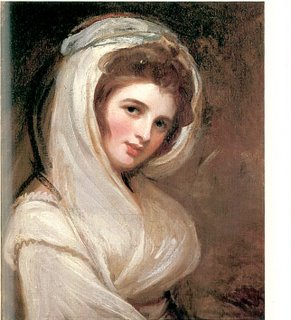






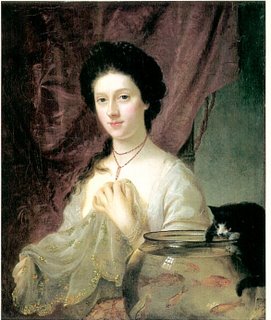

 Diane Perkins
Diane Perkins


